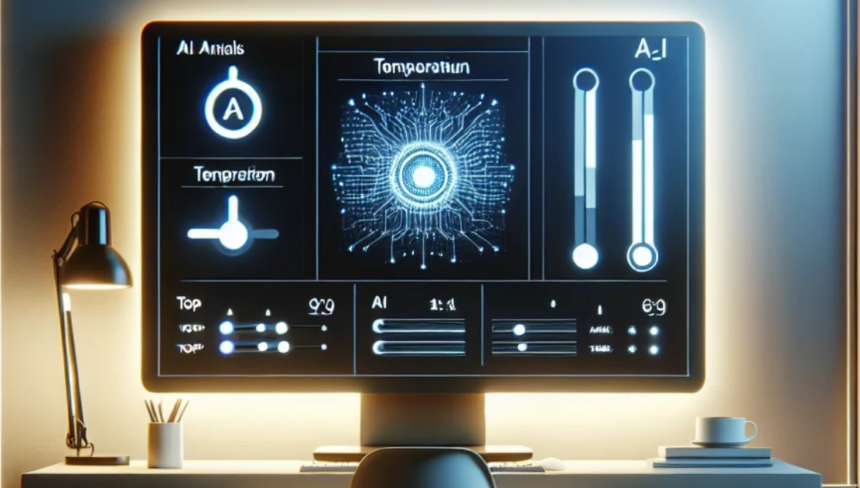In the realm of AI and machine learning, the ability to fine-tune models is vital for achieving desired outputs. Among these fine-tuning techniques, coedit model how to use temperature top_p settings stands out. Understanding these parameters can significantly enhance your interactions with AI, whether you’re generating text, composing music, or creating art. This article explores the concepts of temperature and top-p, explaining how to effectively use them in the coedit model to achieve optimal results.
Understanding the coedit model how to use tempearture top_p
The coedit model is a collaborative AI tool designed to assist users in various creative tasks. It utilizes advanced machine learning algorithms to generate content based on user inputs. One of the key aspects of this model is its ability to adjust the randomness and creativity of outputs through temperature and top-p settings.
What is Temperature?
Temperature is a parameter that influences the randomness of the AI’s responses. A low temperature results in more deterministic outputs, while a high temperature increases randomness. Here’s how it works:
- Low Temperature (e.g., 0.1 -0.3): The model becomes more conservative, sticking closely to the most likely outcomes. This is ideal for generating coherent and relevant content but can lack creativity.
- Medium Temperature (e.g., 0.5): The model finds a balance, providing a mix of reliability and creativity. This setting is great for exploratory tasks where you want fresh ideas but still require some structure.
- High Temperature (e.g., 0.7- 1.0): The output becomes more unpredictable, allowing for unique and creative responses. This setting is useful for brainstorming sessions or artistic endeavors.
What is Top-P?
Top-p, or nucleus sampling, is another parameter that controls the diversity of the output. Instead of selecting from the entire vocabulary, top-p limits the choices to the most probable next words. Here’s how it works:
- Low Top-P (e.g., 0.1- 0.3): The model will consider only the most likely options for the next word, resulting in more predictable and less varied responses.
- Medium Top-P (e.g., 0.5): This setting opens up a broader range of options, allowing for more creative outputs without straying too far from the likely choices.
- High Top-P (e.g., 0.9- 1.0): The model will consider a wider variety of possibilities, leading to highly diverse and sometimes unexpected outputs. This setting is great for creative projects where innovation is key.
How to Use Temperature and Top-P Together?
Combining temperature and top-p settings allows for fine-tuned control over the AI’s output. Here’s how to effectively use these parameters in the coedit model:
Step 1: Identify Your Goal
Before adjusting temperature and top-p, determine the purpose of your project. Are you looking for structured information, creative storytelling, or something in between? Your goal will guide your settings.
Step 2: Set Temperature
Adjust the temperature based on how creative or predictable you want the output to be:
- For factual reports or concise explanations, use a low temperature (0.1 0.3).
- For storytelling or creative writing, consider a medium (0.5) or high temperature (0.7 1.0).
Step 3: Adjust Top-P
Next, set the top-p parameter according to the desired diversity of the output:
- For focused responses, a lower top-p (0.1 0.3) keeps the content on track.
- For exploratory writing or brainstorming, use a higher top-p (0.7 1.0) to introduce variety and creativity.
Step 4: Experiment and Iterate
Don’t be afraid to experiment with different combinations of temperature and top-p. Start with the initial settings based on your goal, then adjust as needed. For example, if you find the content too rigid, increase the temperature or top-p slightly.
Step 5: Review Outputs
Once you’ve generated content, review it carefully. Check for coherence, relevance, and creativity. Adjust the parameters if necessary to better align the output with your expectations.
Tips for Effective Use
To maximize the effectiveness of the coedit model with temperature and top-p, consider these tips:
Understand Your Audience: Tailor your settings based on who will consume the content. A formal report may require lower settings than a blog post.
- Use Iterative Feedback: Use the outputs as a learning tool. Assess what works and what doesn’t, and adjust your parameters accordingly.
- Document Your Settings: Keep a record of the settings you use for different projects. This will help you replicate successful results in the future.
- Balance Creativity with Clarity: Ensure that while you aim for creativity, the content remains clear and understandable. High randomness can sometimes lead to confusion.
Conclusion
Understanding coedit model how to use tempearture top_p is essential for anyone looking to enhance their interaction with AI. By fine-tuning these parameters, you can achieve a perfect balance between creativity and coherence, tailoring your content to suit your specific needs. Experimenting with different combinations will enable you to unlock the full potential of the coedit model, making your creative processes more efficient and enjoyable.
FAQs
What is the ideal temperature for creative writing?
A medium to high temperature (0.5 1.0) is typically ideal for creative writing.
How does top-p sampling affect AI output?
Top-p sampling controls the diversity of choices for the next word, impacting how varied or predictable the output is.
Can I use temperature and top-p together effectively?
Yes, combining these settings allows for fine-tuning outputs based on your specific needs.
What should I consider when adjusting these parameters?
Consider your project goals, audience, and the type of content you want to generate.
Is there a perfect setting for temperature and top-p?
No single setting works for all projects; experimentation is key to finding what works best for you.
How do I know if my output is too rigid?
If the content feels predictable or lacks creativity, consider increasing the temperature or top-p.
Can I automate the adjustment of these parameters?
Some advanced AI platforms allow for automated adjustments based on desired output characteristics.
What types of projects benefit most from higher randomness?
Projects that prioritize brainstorming, storytelling, or artistic creativity often benefit from higher randomness in outputs.







